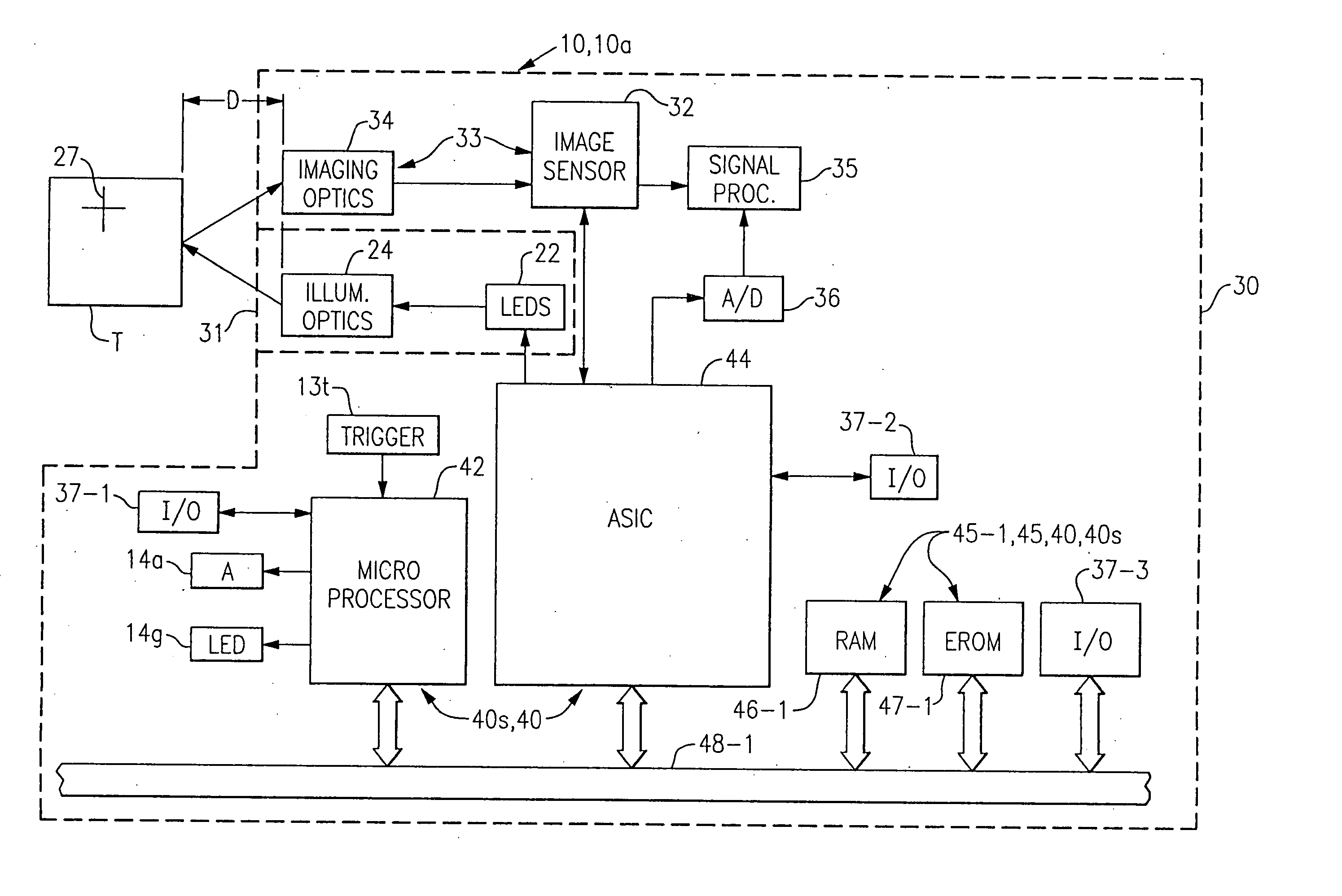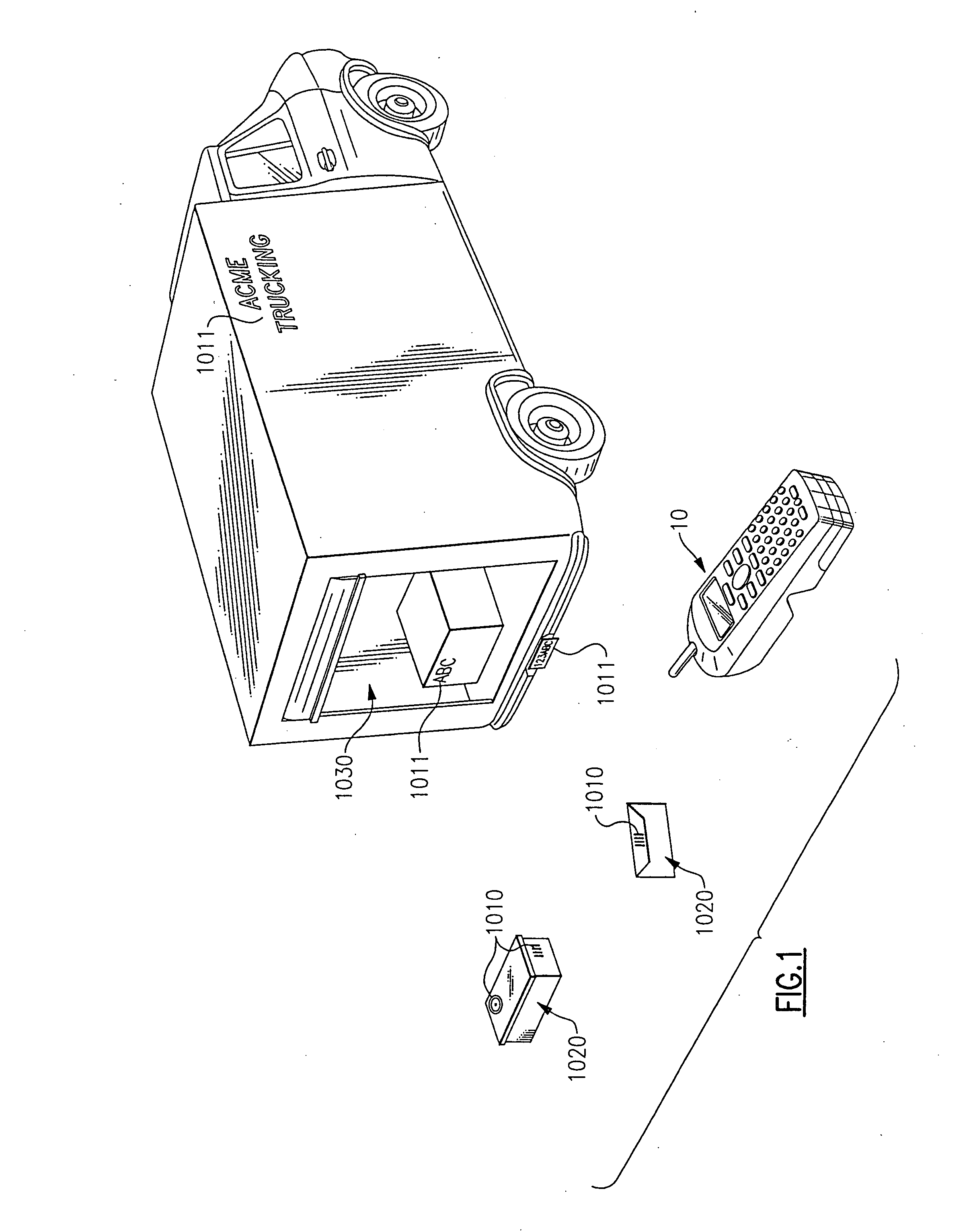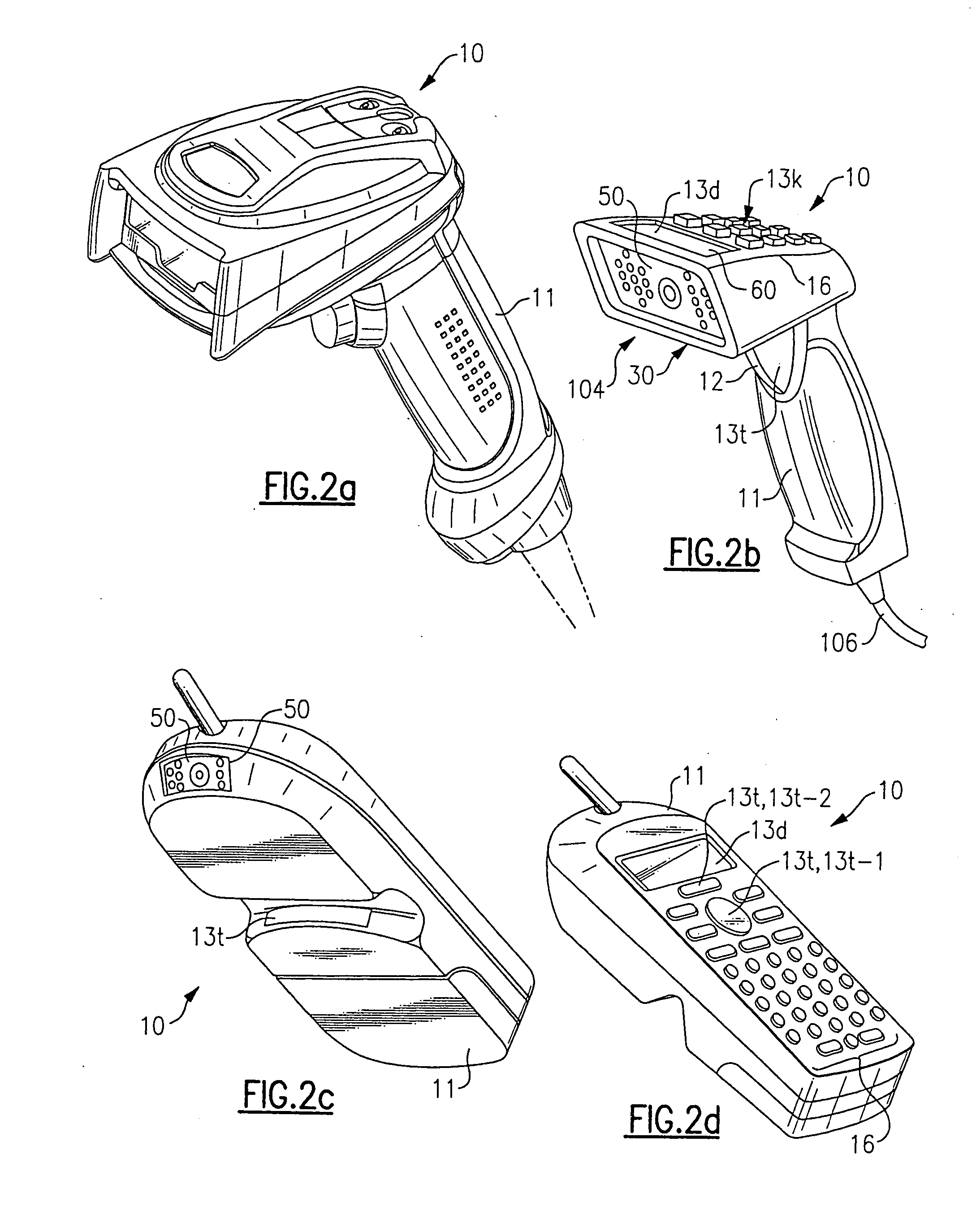Adaptive optical image reader
an optical image reader and adaptive technology, applied in the field of optical image reader apparatus and methods, can solve the problems of inconvenient data acquisition, inconvenient data acquisition, and high cost, and achieve the effect of improving data acquisition accuracy and data acquisition tim
- Summary
- Abstract
- Description
- Claims
- Application Information
AI Technical Summary
Benefits of technology
Problems solved by technology
Method used
Image
Examples
example 1
Voting
[0111] In linear bar code decoding, the process of verifying a bar code read by successively decoding the same bar code in multiple scans is used to eliminate cases where the bar code is not interpreted correctly or where a noisy signal may randomly generate a bar code read. This will be henceforth referred to as voting the bar code. To find the correct digitization method for the bar code itself, the system cycles through the different digitizers running on the system. However, once a digitizer has yielded what appears to be valid bar code data, then the system will “lock on” to that digitizer, and use it exclusively for the next few scans in an attempt to vote the bar code and get a successful read. For instance, if a certain digitizer Dx found what is believed to be bar code data, the control circuit 140 would then configure the system to use that same digitizer Dx and only that digitizer for the next N number of scans (where usually N>1) to ensure that a significant numbe...
example 2
Stacked Linear
[0113] Another instance where the control circuit 140 can configure the system such that a given digitizer is used for the next subsequent N scans is with the case of a stacked linear bar code such as PDF417. Stacked linear bar codes inherently require multiple single line scans in order to successfully decode. For example, where the system is cycling through the plurality of digitizers and sees a valid decode of a row of stacked linear data, the system is configured to use that same digitizer exclusively for the next N scans (again usually N>1). If a subsequent line of data from that stacked linear code is decoded during those N times of using the same digitizer, the system is then refreshed to use that digitizer for another N scans. However, if or when enough data is received to create a successful decode, or if the number of times to use a given digitizer N counts down to zero having not seen another row of stacked linear data, the system is then reset to cycle thr...
example 3
Statistical Decision Making
[0115] In a contemplated aspect, the multiple digitizers would be used to essentially optimize scanning in a given environment. For example, statistical records would kept internal to the system during the process of cycling through the digitizers to rank all of the digitizers in the order of their success rate at finding bar code data (i.e. not counting the times when a specific digitizer is used repeatedly for voting). Then, an intelligent decision could be made as to the order of how the digitizers would be run through. For instance, the first digitizer in this ranking would be the one that was statistically most successful at finding a bar code, the second would be the second most successful, and so on. It may be that one digitizer happens to be twice as successful as the combined success rate of each of the others, in which case that one digitizer would get called not only with the first scan, but also with the third, and fifth, etc. Assuming that th...
PUM
 Login to View More
Login to View More Abstract
Description
Claims
Application Information
 Login to View More
Login to View More - R&D
- Intellectual Property
- Life Sciences
- Materials
- Tech Scout
- Unparalleled Data Quality
- Higher Quality Content
- 60% Fewer Hallucinations
Browse by: Latest US Patents, China's latest patents, Technical Efficacy Thesaurus, Application Domain, Technology Topic, Popular Technical Reports.
© 2025 PatSnap. All rights reserved.Legal|Privacy policy|Modern Slavery Act Transparency Statement|Sitemap|About US| Contact US: help@patsnap.com



